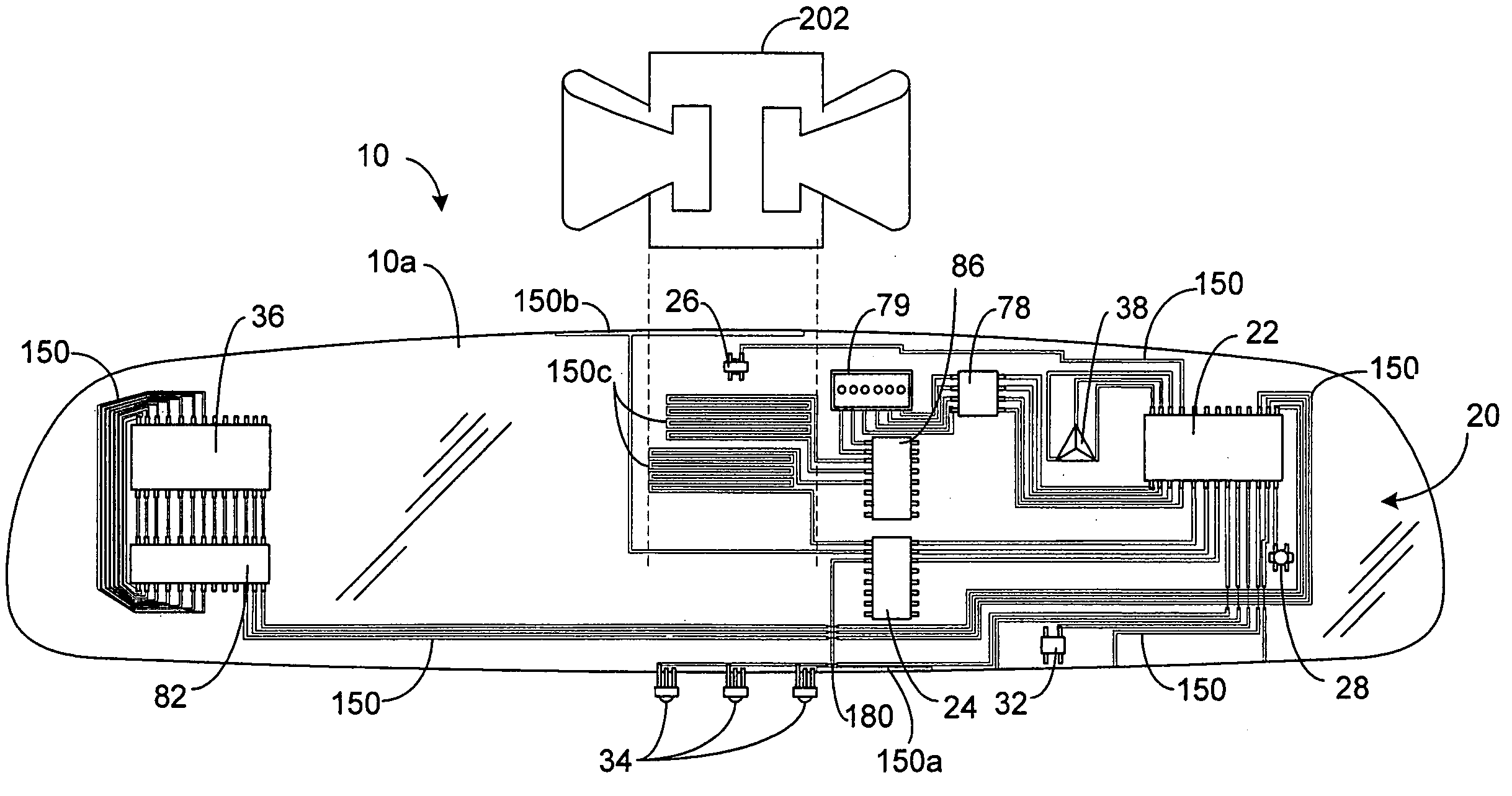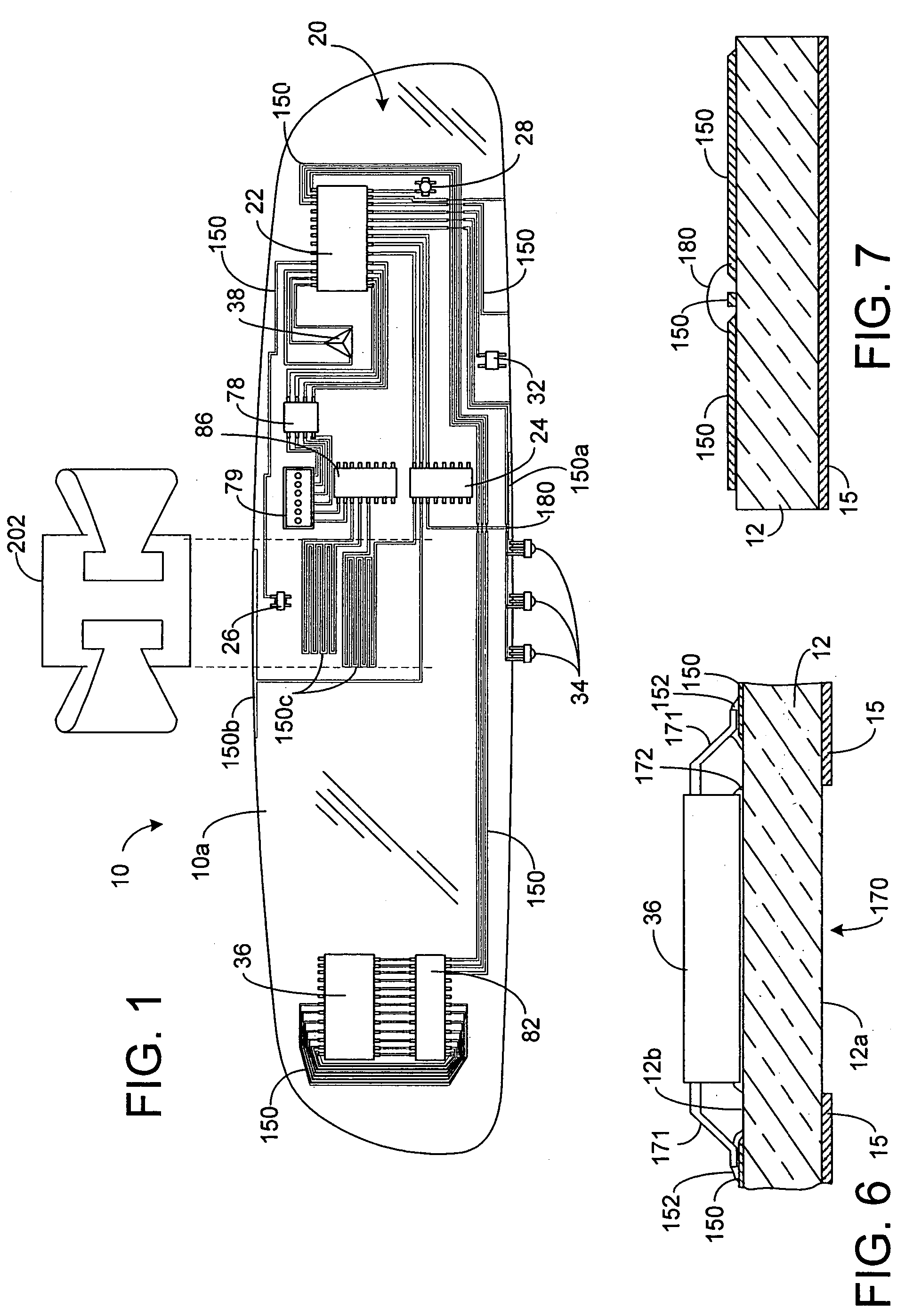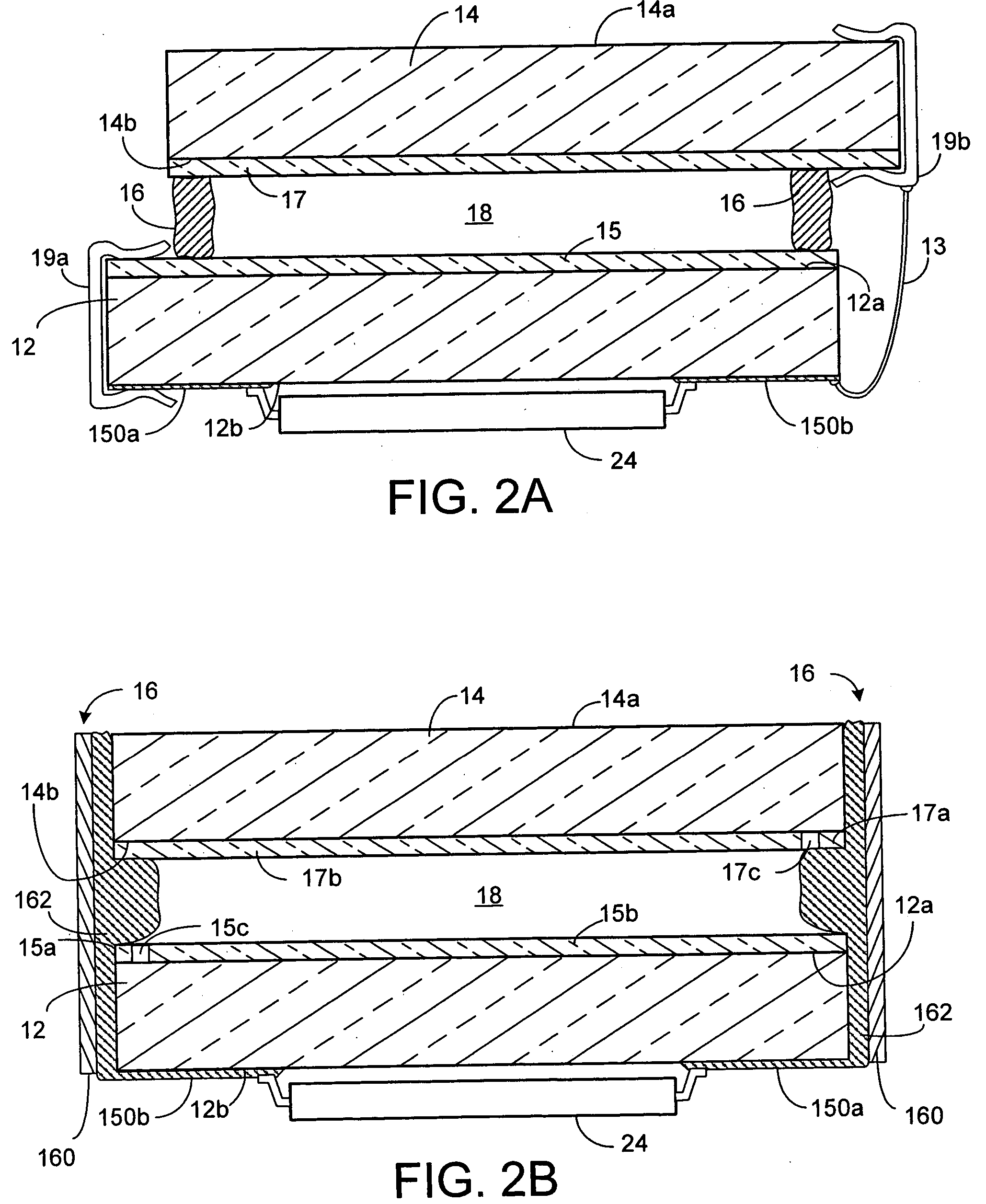Rearview mirror element having a circuit mounted to the rear surface of the element
a rearview mirror and circuit technology, applied in the field of rearview mirrors, can solve the problems of increasing the complexity, component count and cost of the mirror assembly, imposing styling constraints, and circuit boards that require many interconnections
- Summary
- Abstract
- Description
- Claims
- Application Information
AI Technical Summary
Benefits of technology
Problems solved by technology
Method used
Image
Examples
Embodiment Construction
[0034] A vehicle rearview mirror element 10 according to one embodiment of the present invention is shown in FIGS. 1 and 2A. As shown, mirror element 10 comprises: a first substrate 12 having a front surface 12a and a rear surface 12b; a reflective coating 15 disposed on a surface of first substrate 12; and one or more electronic circuit components (20-116) secured to rear surface 12b of first substrate 12.
[0035] Mirror element 10 may be an electrochromic mirror element. As shown in FIG. 2A, an electrochromic mirror element 10a comprises a transparent second substrate 14 positioned in front of first substrate 12. Reflective coating 15 is preferably applied to front surface 12a of first substrate 12. Reflective coating 15 is thus preferably electrically conductive to serve as a first electrode for electrochromic mirror element 10a. Electrochromic mirror element 10a further comprises a transparent conductive layer 17 applied to a rear surface 14b of second substrate 14, which serves ...
PUM
| Property | Measurement | Unit |
|---|---|---|
| voltage | aaaaa | aaaaa |
| voltage | aaaaa | aaaaa |
| transparent | aaaaa | aaaaa |
Abstract
Description
Claims
Application Information
 Login to View More
Login to View More - R&D
- Intellectual Property
- Life Sciences
- Materials
- Tech Scout
- Unparalleled Data Quality
- Higher Quality Content
- 60% Fewer Hallucinations
Browse by: Latest US Patents, China's latest patents, Technical Efficacy Thesaurus, Application Domain, Technology Topic, Popular Technical Reports.
© 2025 PatSnap. All rights reserved.Legal|Privacy policy|Modern Slavery Act Transparency Statement|Sitemap|About US| Contact US: help@patsnap.com



